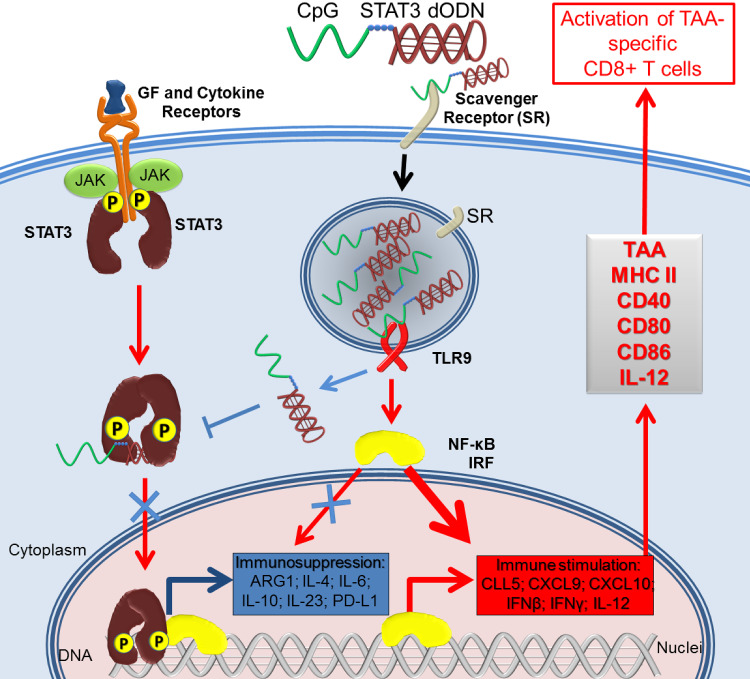Fig. 1.
The intracellular mode of action of bi-functional CpG-STAT3 decoy oligodeoxynucleotides. CpG-STAT3dODN conjugates are recognized by scavenger receptors and quickly internalized through endocytosis into target cells. While in early endosomes, some of the internalized conjugates bind to TLR9 triggering downstream immunostimulatory signaling. In addition, TLR9 activation facilitates the release of an excess of unbound CpG-STAT3dODNs from endosomes into cytoplasm. The CpG-STAT3dODN binds to the dimers of STAT3 activated by upstream growth factor/cytokine signaling. The sequestration of the decoy-bound STAT3 in the cytoplasm prevents its transcriptional activity, shifting the balance from immunosuppression to the production of pro-inflammatory cytokines/chemokines and towards the processing of tumor-associated antigens (TAA). Altogether, these effects generate systemic CD8+ T cell-mediated immune responses against specific tumor antigens

